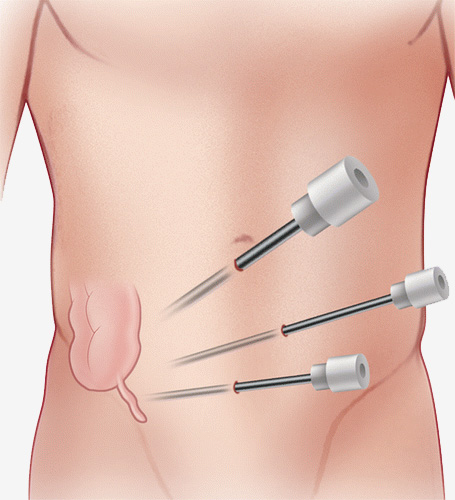
It is the most common acute abdominal pain and can affect people of all ages, though it is most frequently found between the ages of 12 and 60. It can also occur in younger or older individuals. The initial symptoms of the disease are very similar to other types of acute abdominal pain, which often leads to delayed diagnosis and a greater risk of dangerous complications. Seeking consultation with a specialist early on and undergoing a detailed physical examination to differentiate it from other causes of abdominal pain is therefore vital for an accurate diagnosis and timely treatment.
The appendix is a blind tube that branches off the beginning of the large intestine, located in the lower right abdomen. Inflammation of the appendix results from the obstruction of its lumen, which can be caused by food remnants hardening into feces or by swollen lymph nodes in the area. This increases pressure within the appendix, leading to the accumulation of bacteria and eventual inflammation. Obstruction can also be caused by foreign bodies, tumors, or parasitic worms. If not treated urgently, the disease severity increases until the appendix wall becomes gangrenous and ruptures, causing the infection to spread, which can be life-threatening.

The initial phase often begins with symptoms like nausea, malaise, and loss of appetite. Abdominal pain then begins, which is similar to general abdominal pain and is poorly localized, a phase where misdiagnosis can occur. The pain may manifest as tightness around the epigastrium, frequent pain similar to gastritis, a constant dull ache around the navel, or a cramping/relieving pain similar to diarrhea (feeling like incomplete evacuation, with little coming out). With careful observation, the symptoms differ from the copious, watery stools associated with typical diarrhea. The pain later becomes clearly localized in the lower right abdomen (though some patients may experience pain in this area from the start). Taking over-the-counter pain medication will not cure the condition. As inflammation increases, the pain will worsen with movement, walking, coughing, or sneezing. Patients typically walk hunched over to avoid the appendix contacting the abdominal wall.
If a patient experiences the aforementioned abdominal pain for more than 6 hours, they should immediately seek urgent diagnosis from a specialist at a hospital. The physician will conduct a diagnosis by:
To rule out other diseases, assist in the diagnosis, and evaluate potential complications.
Treatment for appendicitis requires surgery for a complete cure. Techniques include open abdominal surgery and laparoscopic (keyhole) surgery to remove the appendix. Currently, laparoscopic surgery is more popular and is the standard method of treatment due to its advantages over large open incisions: clear visualization of the appendix, less patient pain, faster recovery, and reduced postoperative complications. This surgical method requires a specialized team of laparoscopic surgeons ready to operate, coupled with modern surgical technology. Currently, 3D technology is being used, with procedures performed via Advanced 3D Laparoscopic Surgery. The tip of the endoscope has two lenses, providing the surgeon with a 3D view of the depth of the organs (3D). The surgeon wears 3D glasses during the operation, which provides Full HD image clarity. Alternatively, 4K Ultra High Definition technology is used, displayed on a 55-inch monitor with ultra-high clarity exceeding Full HD, helping the surgeon see internal organs clearly during the procedure, minimizing side effects, and leading to satisfactory surgical outcomes.

If appendicitis is severe (inflamed, necrotic, and ruptured, spreading throughout the abdomen), laparoscopic surgery offers greater benefits to the patient: avoiding a large incision, reducing wound pain, and lowering the risk of postoperative infection. In cases where the appendix has developed an abscess as a complication, the specialist will first perform a CT – Scan for diagnosis, then clean the abdominal cavity and drain the pus from the abscess by inserting a drainage tube to treat the infection and reduce severity, before proceeding with laparoscopic surgery. This helps avoid the need for intestinal resection. The difficulty of treating appendicitis largely depends on the location and complexity of the disease. Since appendicitis is an acute condition with no means of prevention, being aware, observing any abnormalities, and seeking medical attention immediately upon the onset of symptoms will lead to correct and successful treatment. The most important thing to always remember is: do not take medication without consulting a doctor, as while symptoms may temporarily improve, the underlying condition can worsen severely, making definitive treatment difficult.